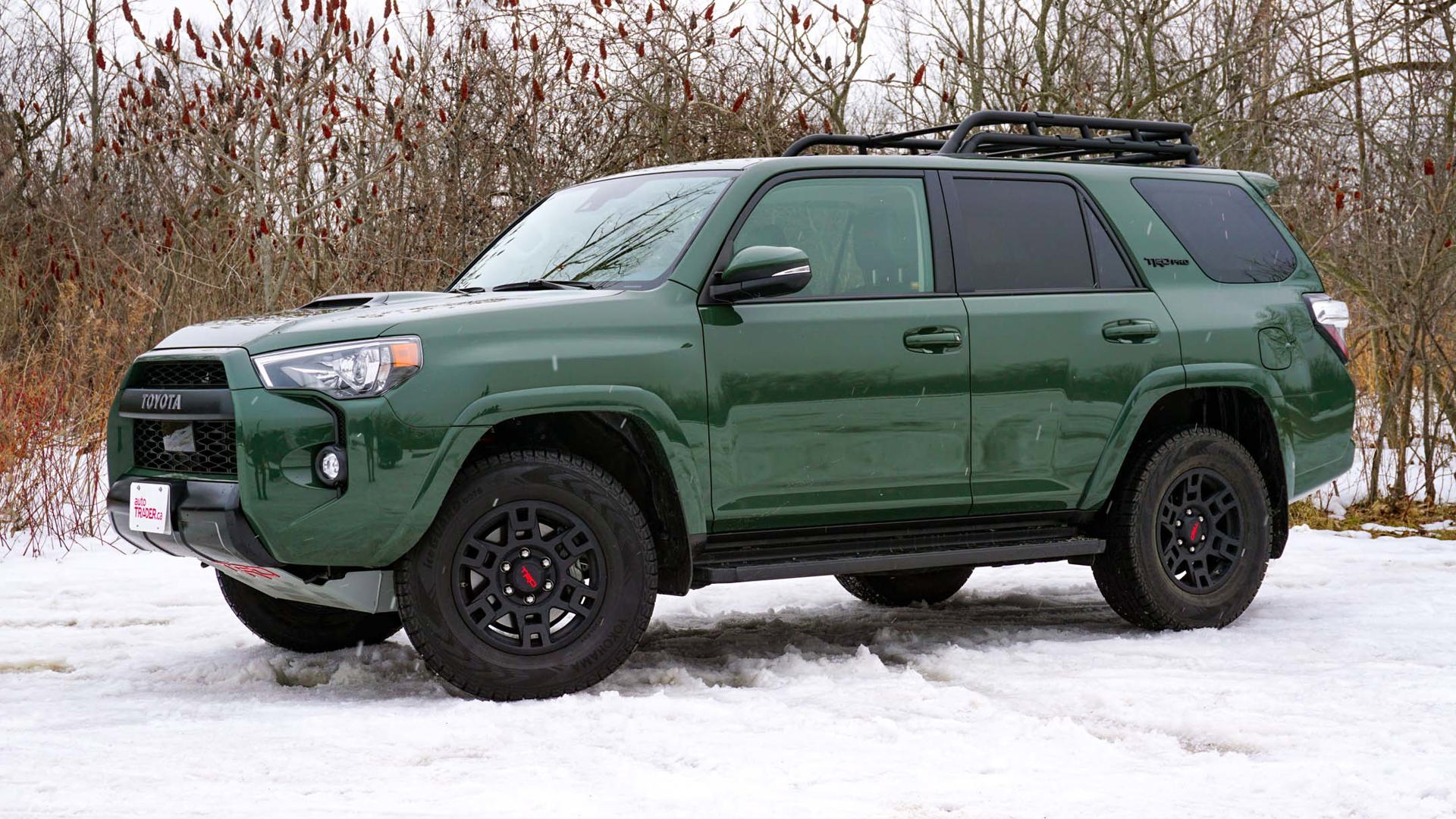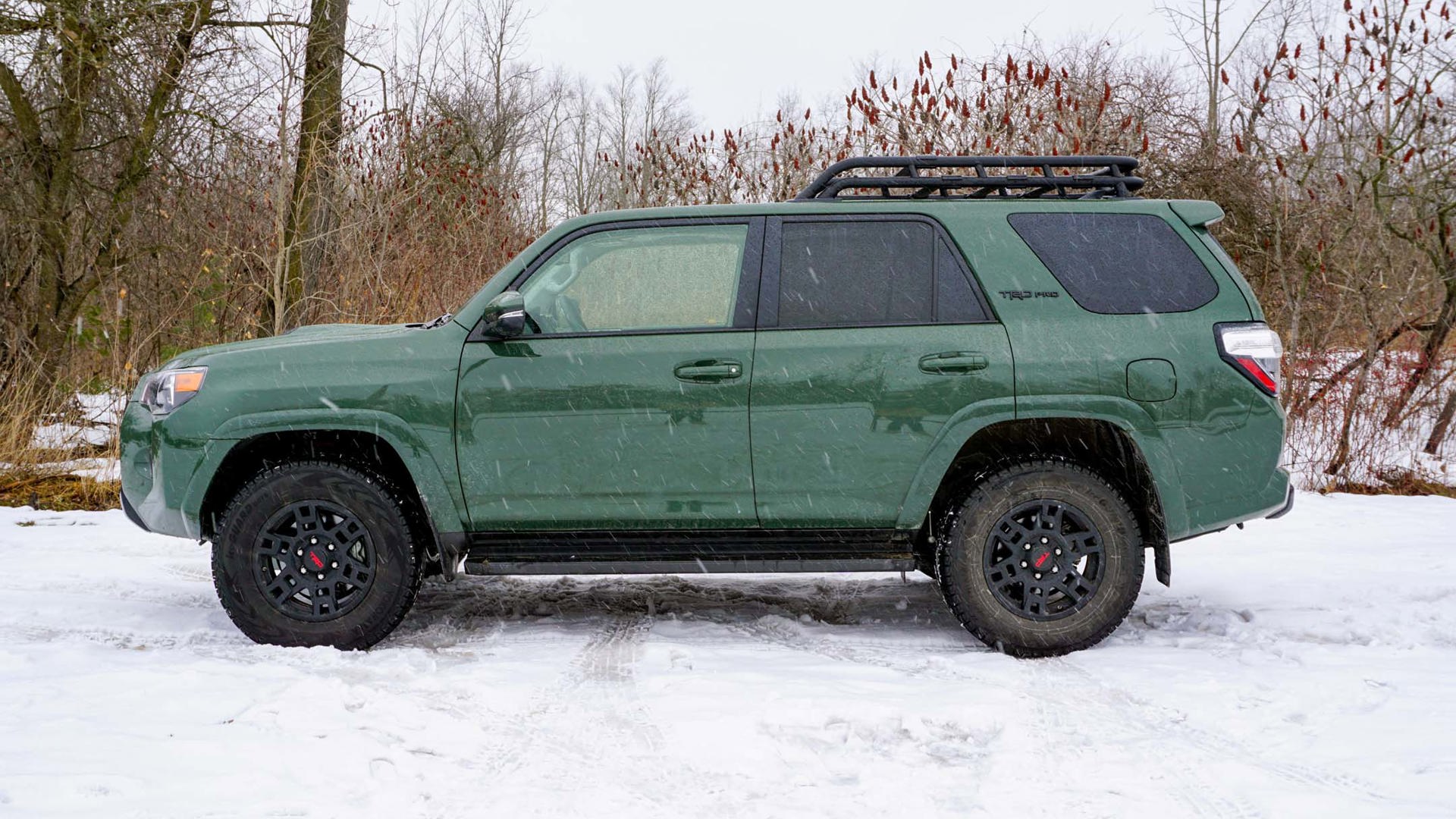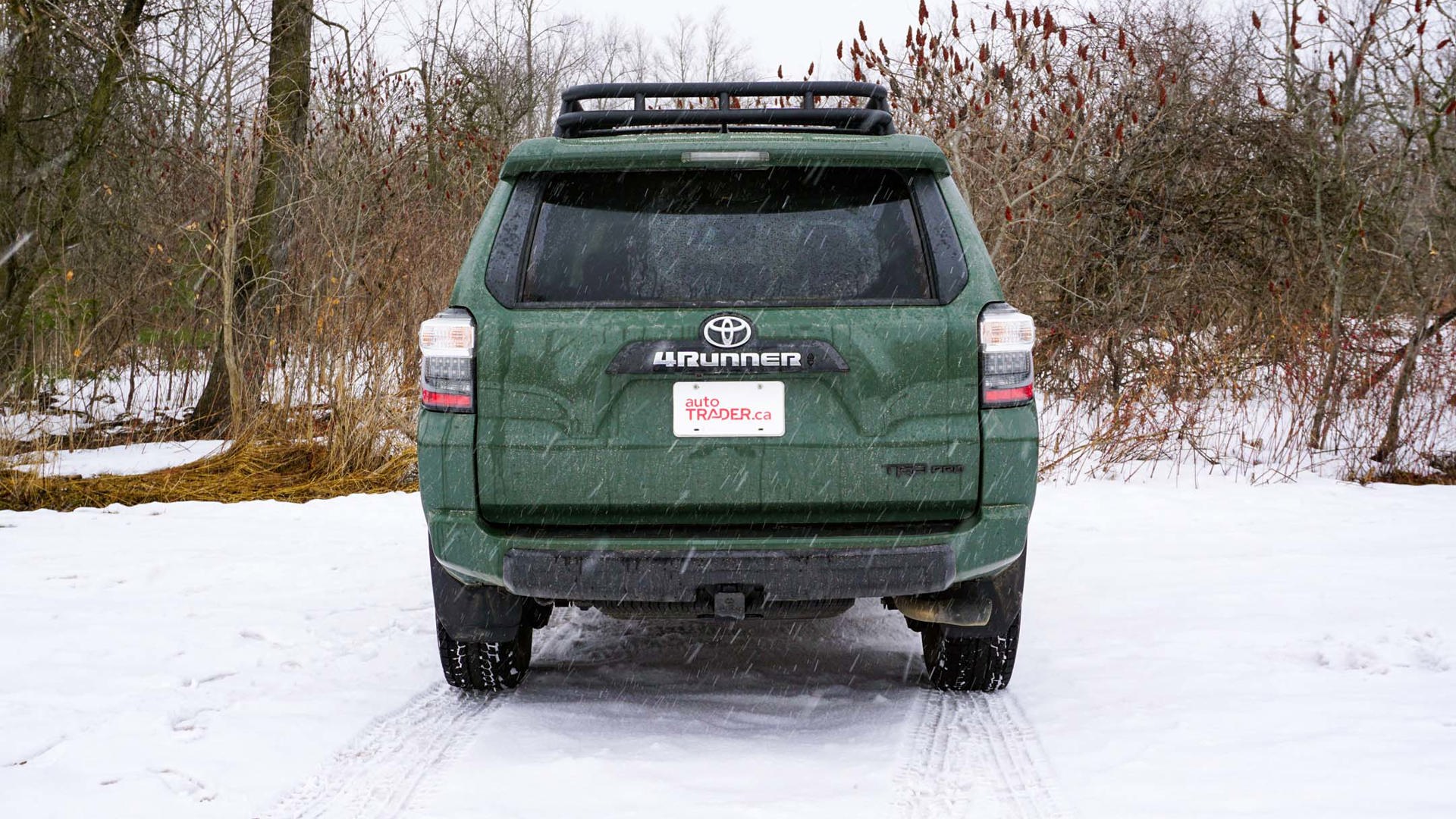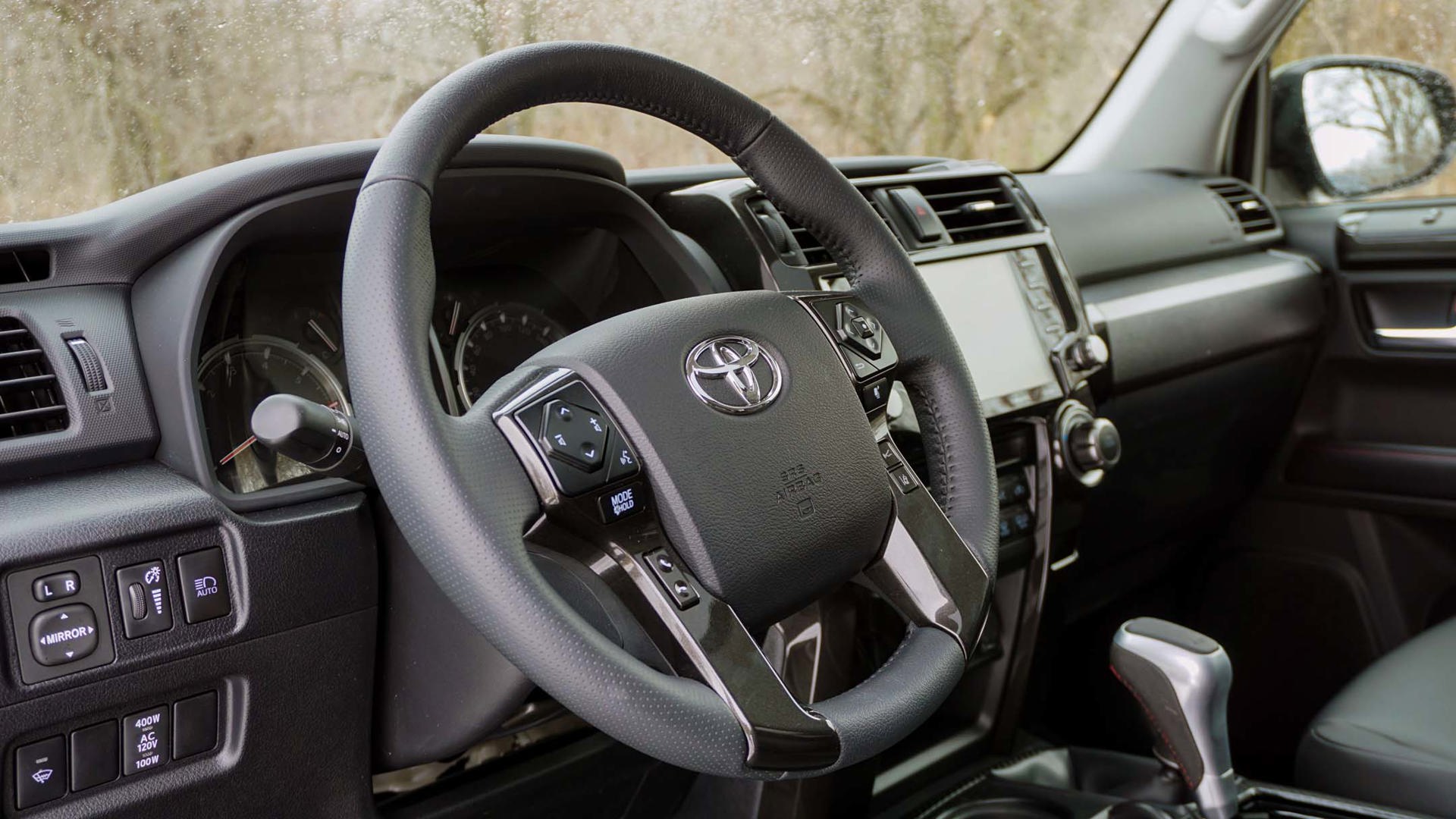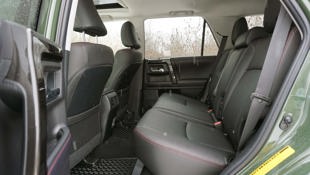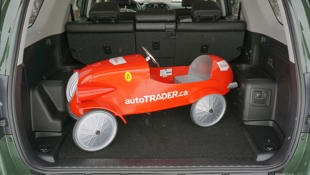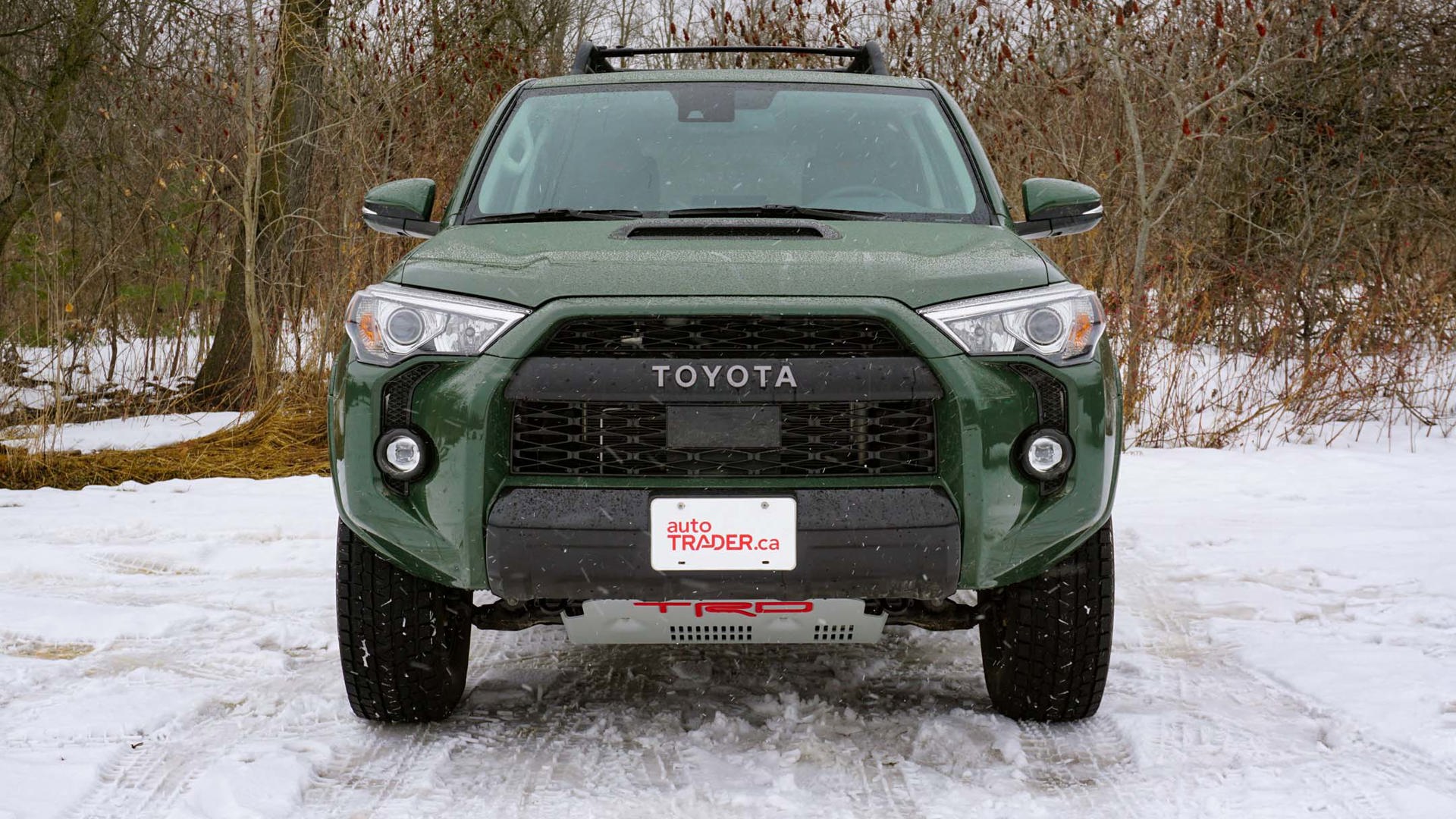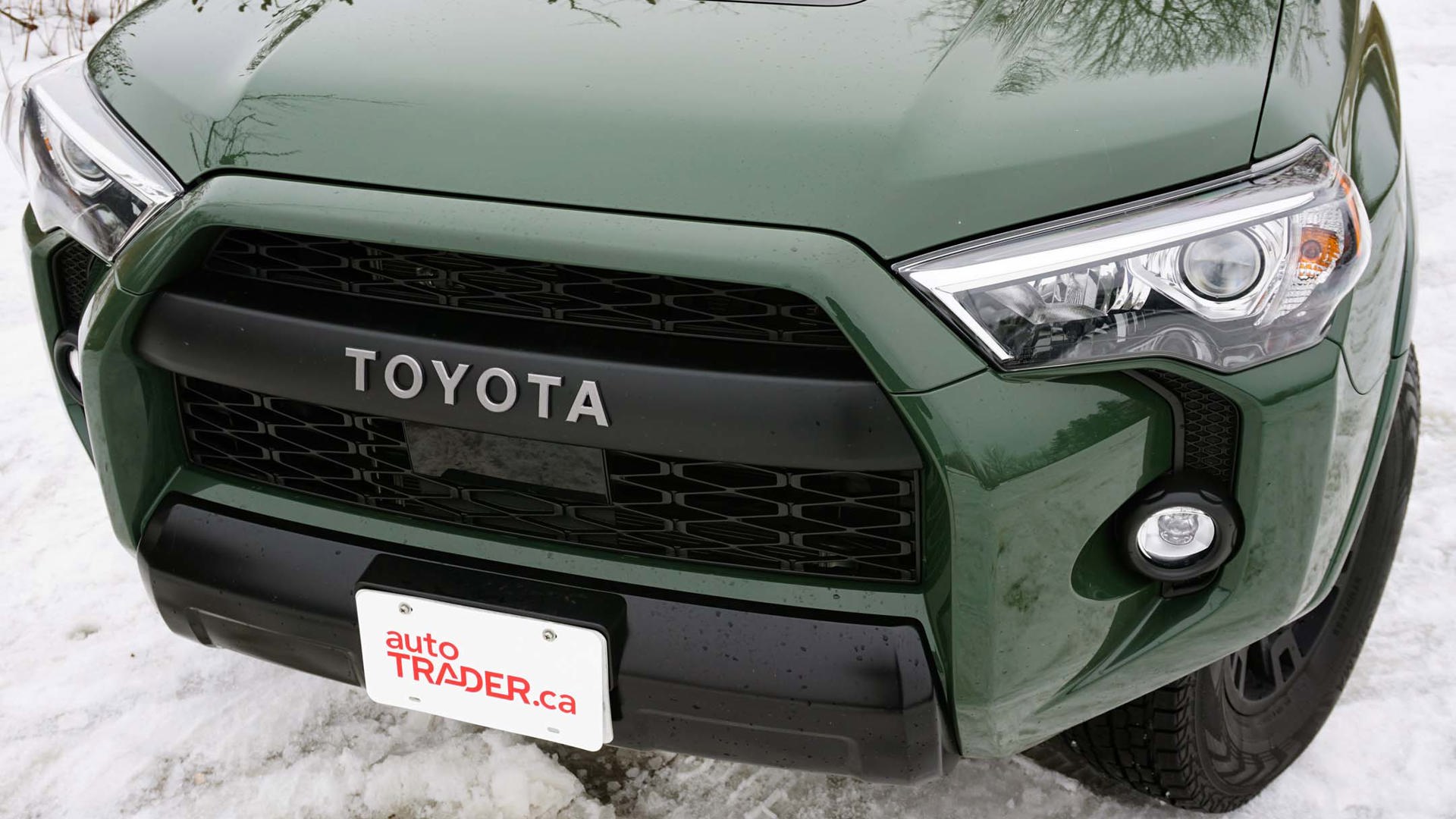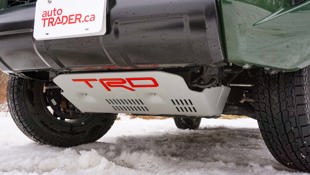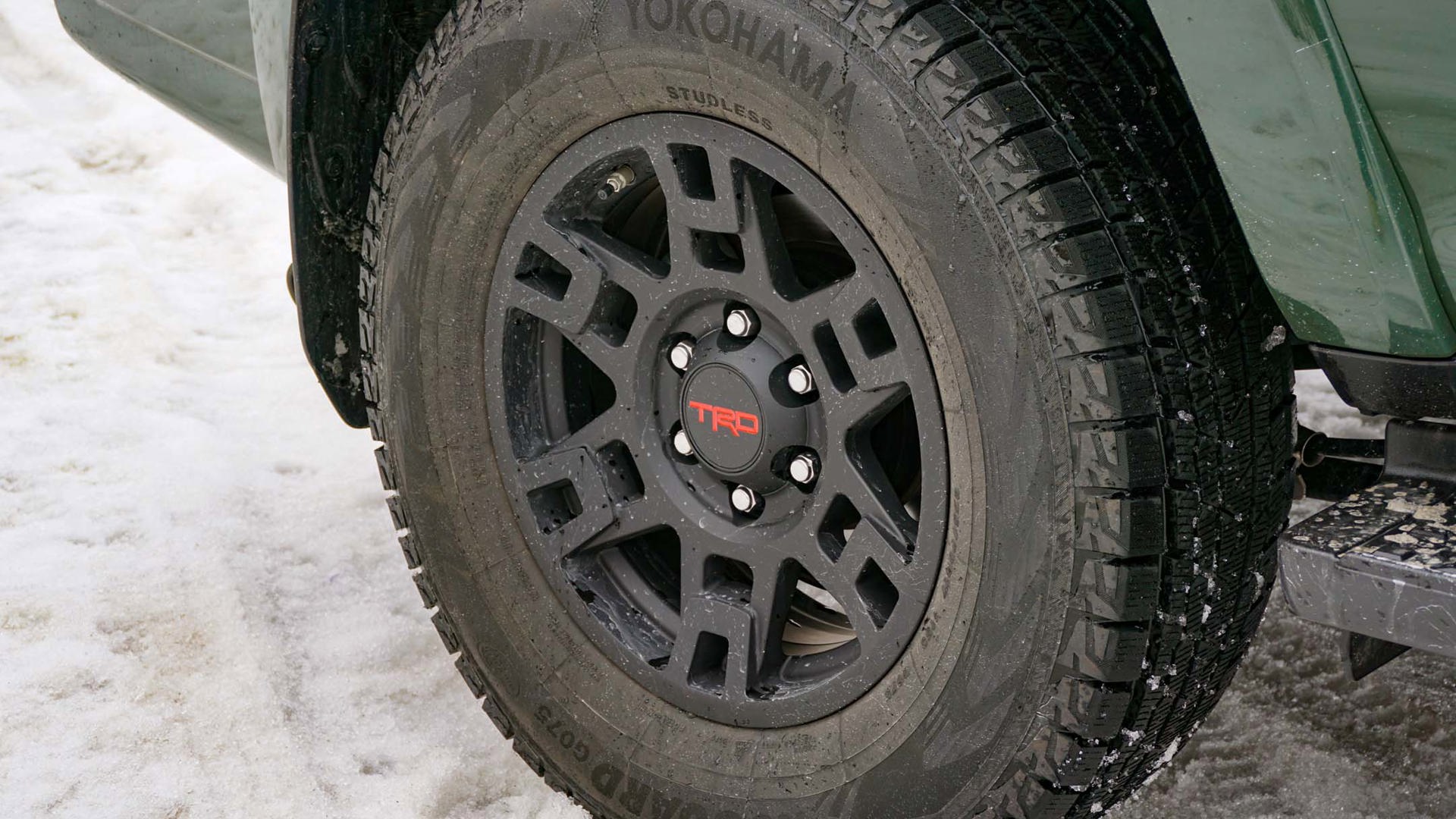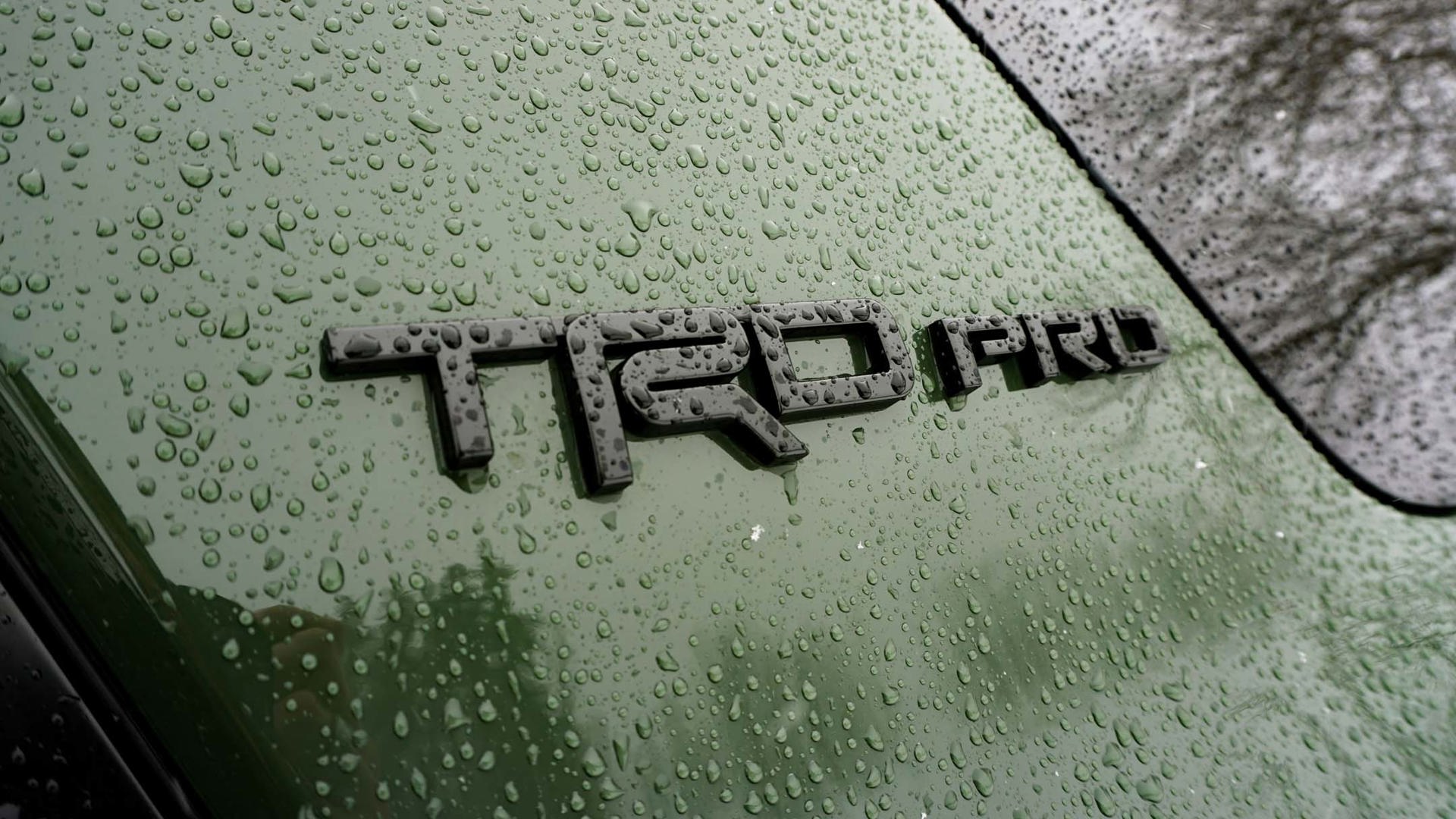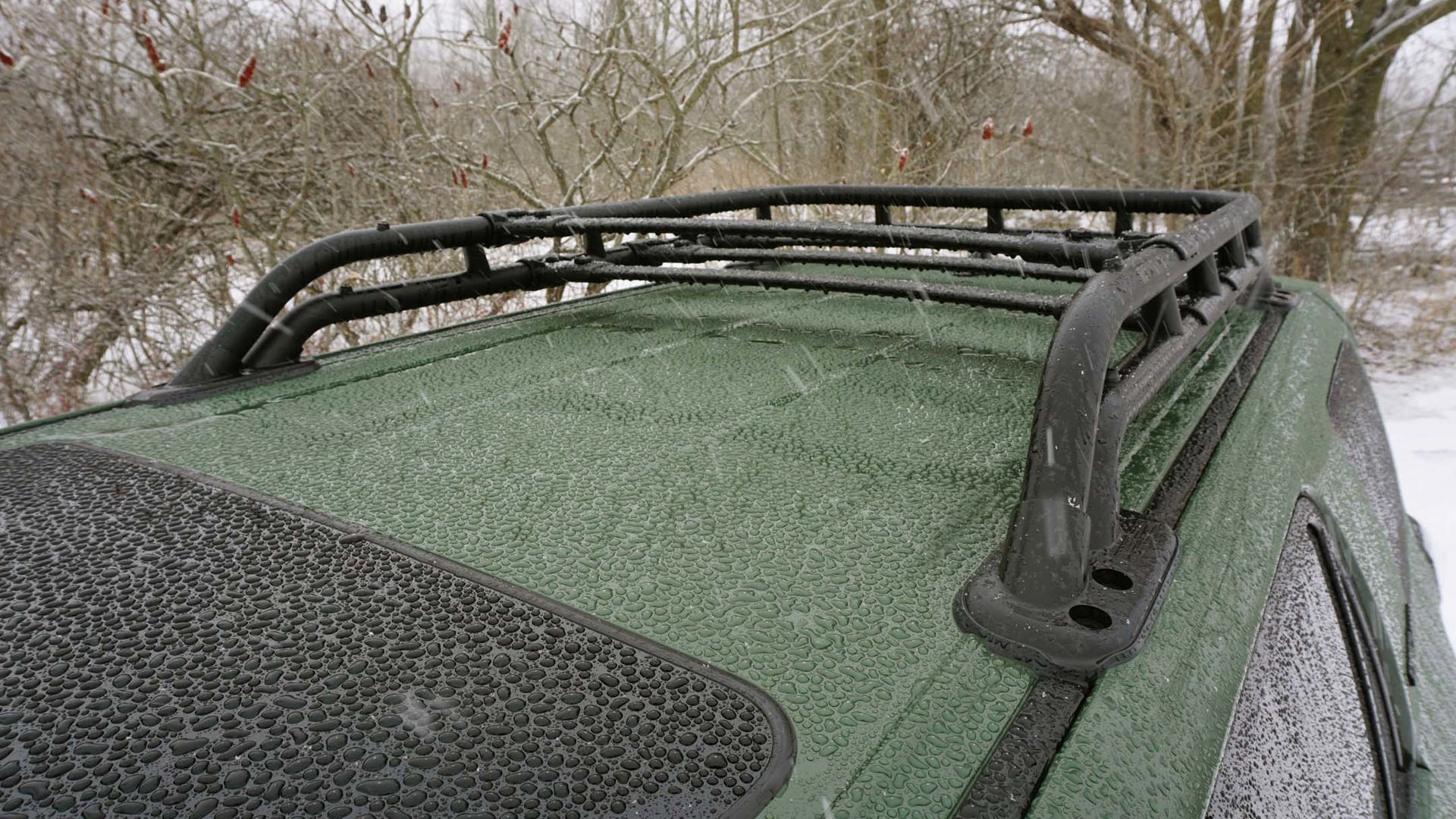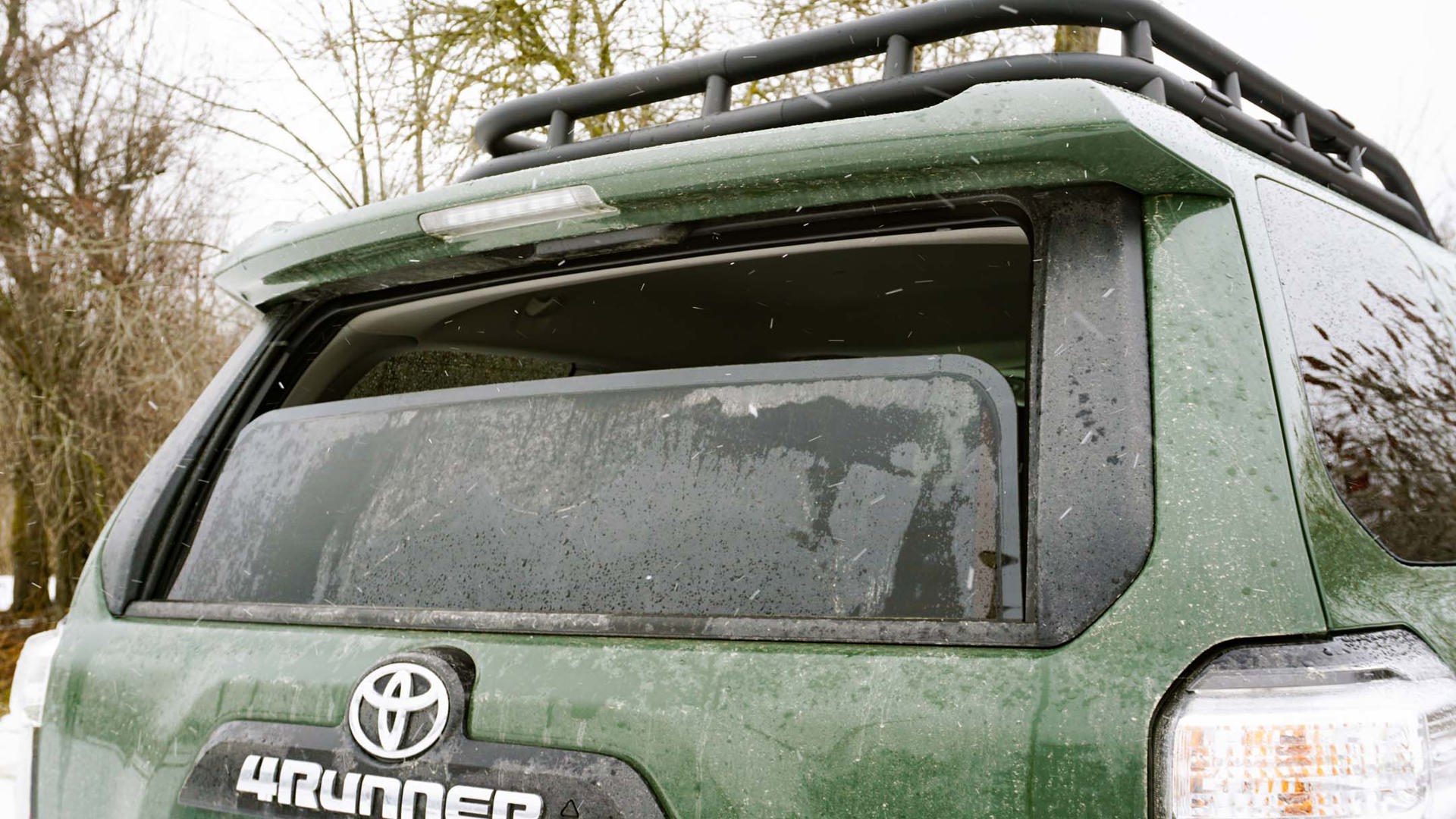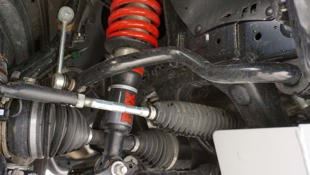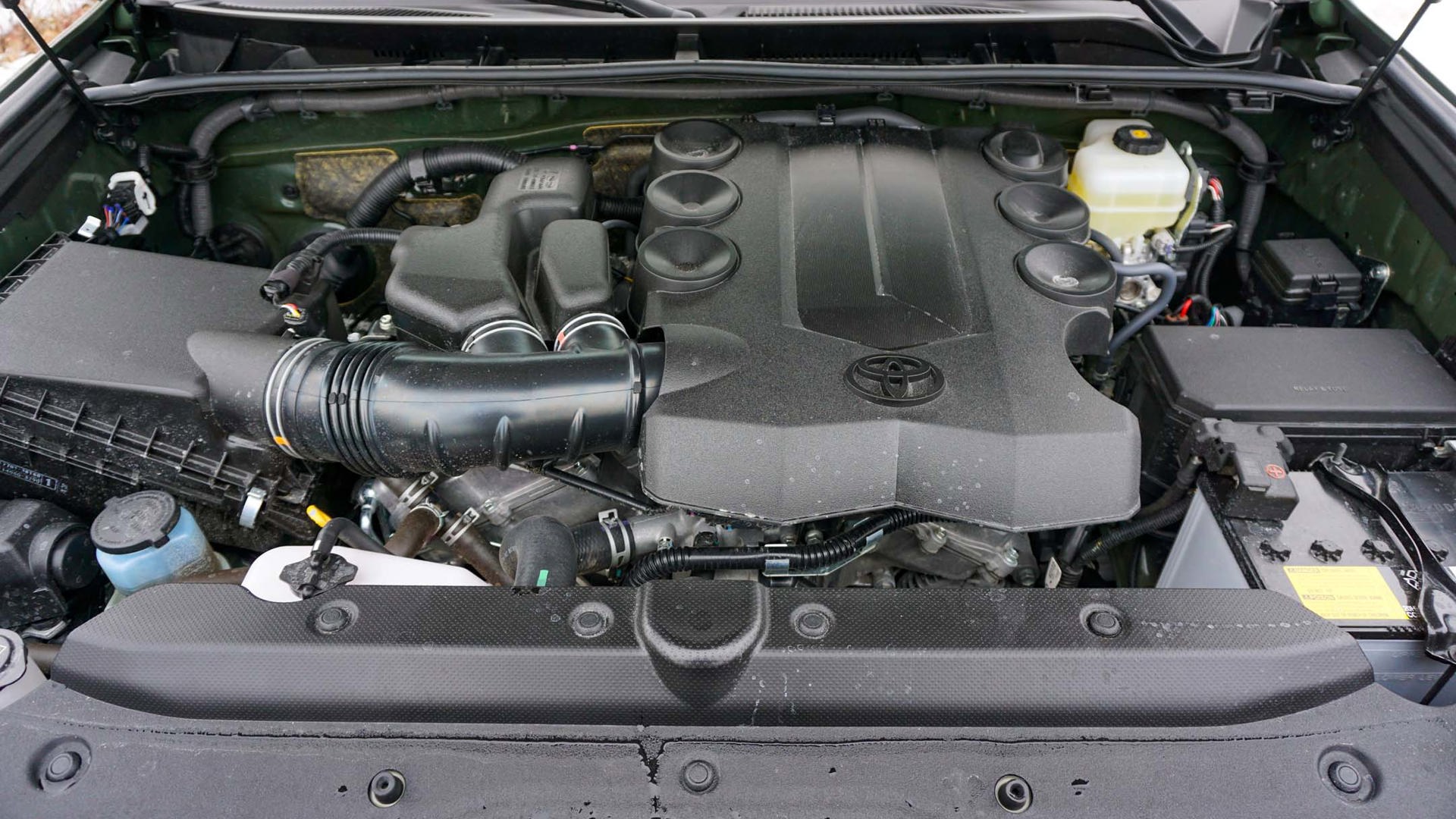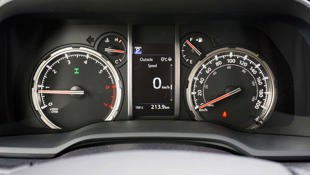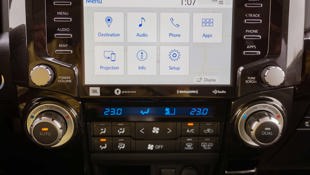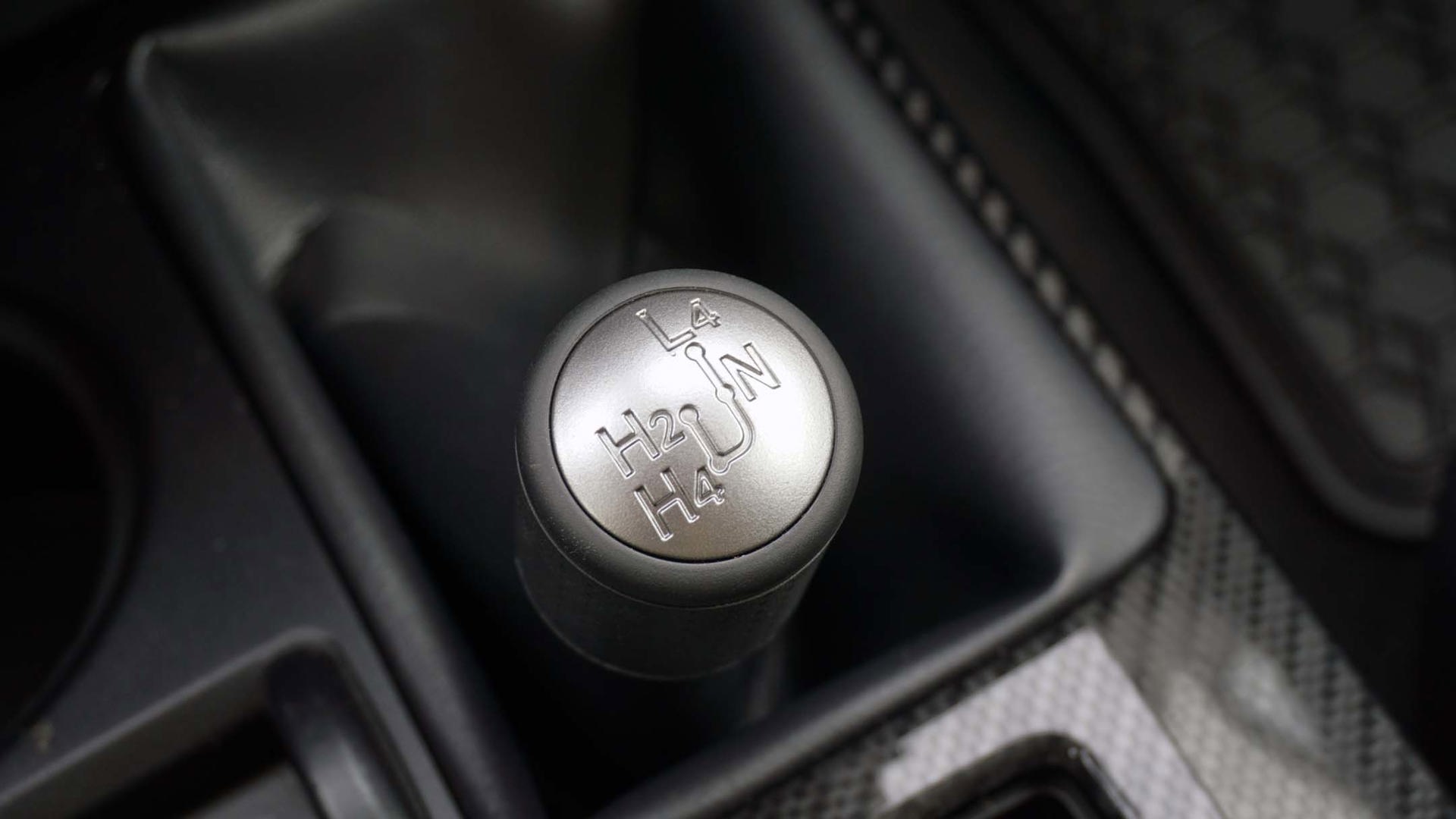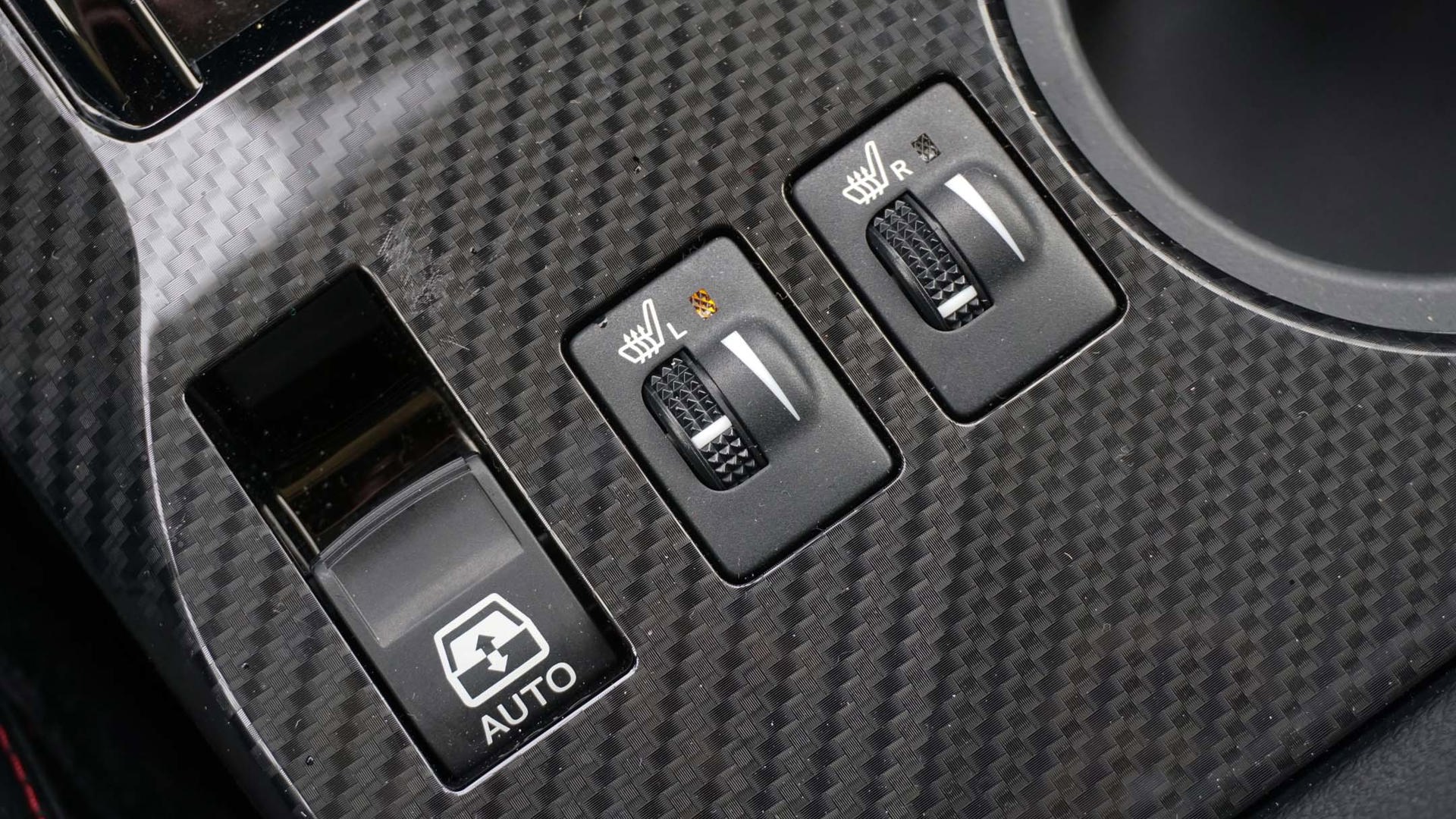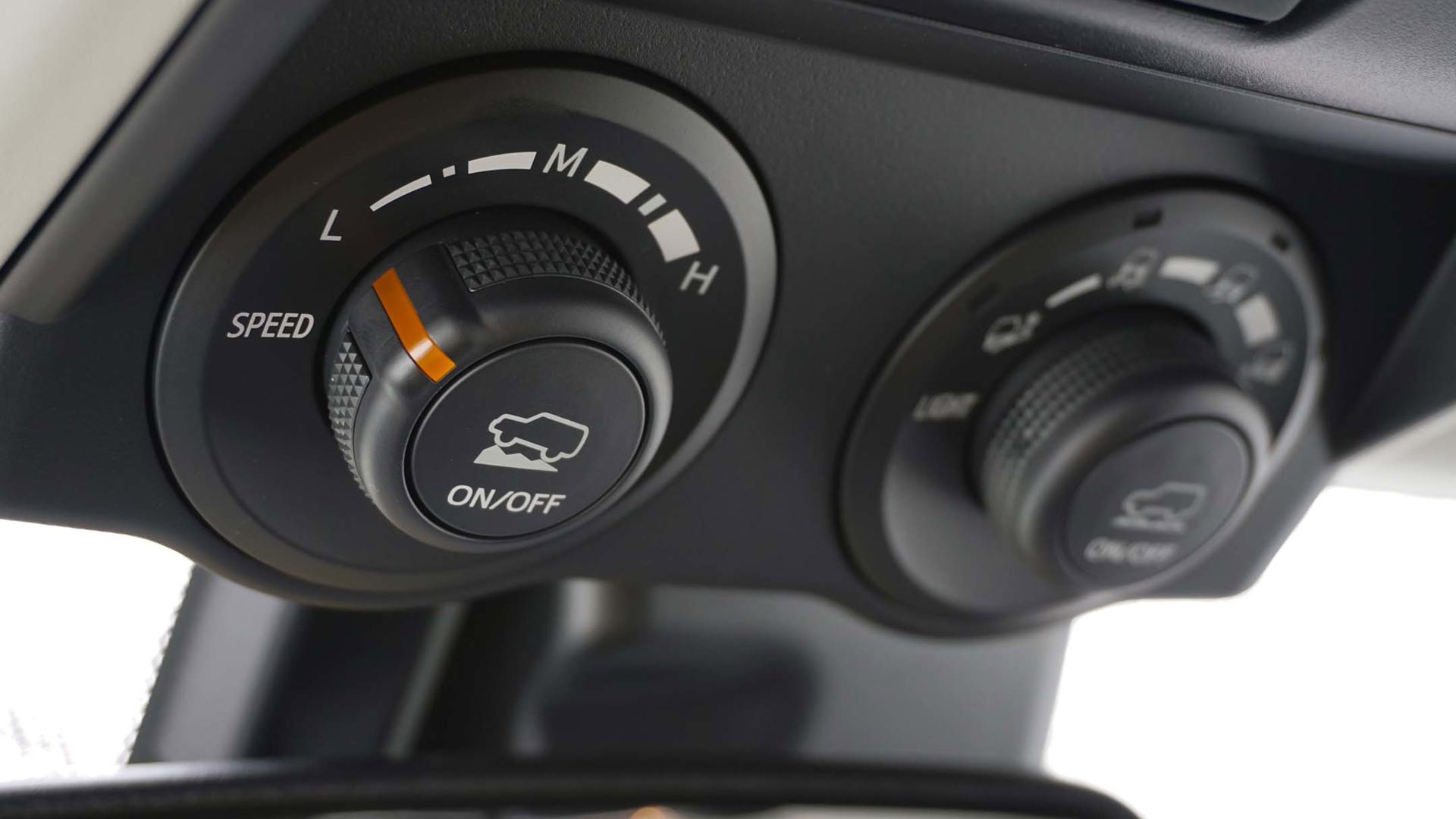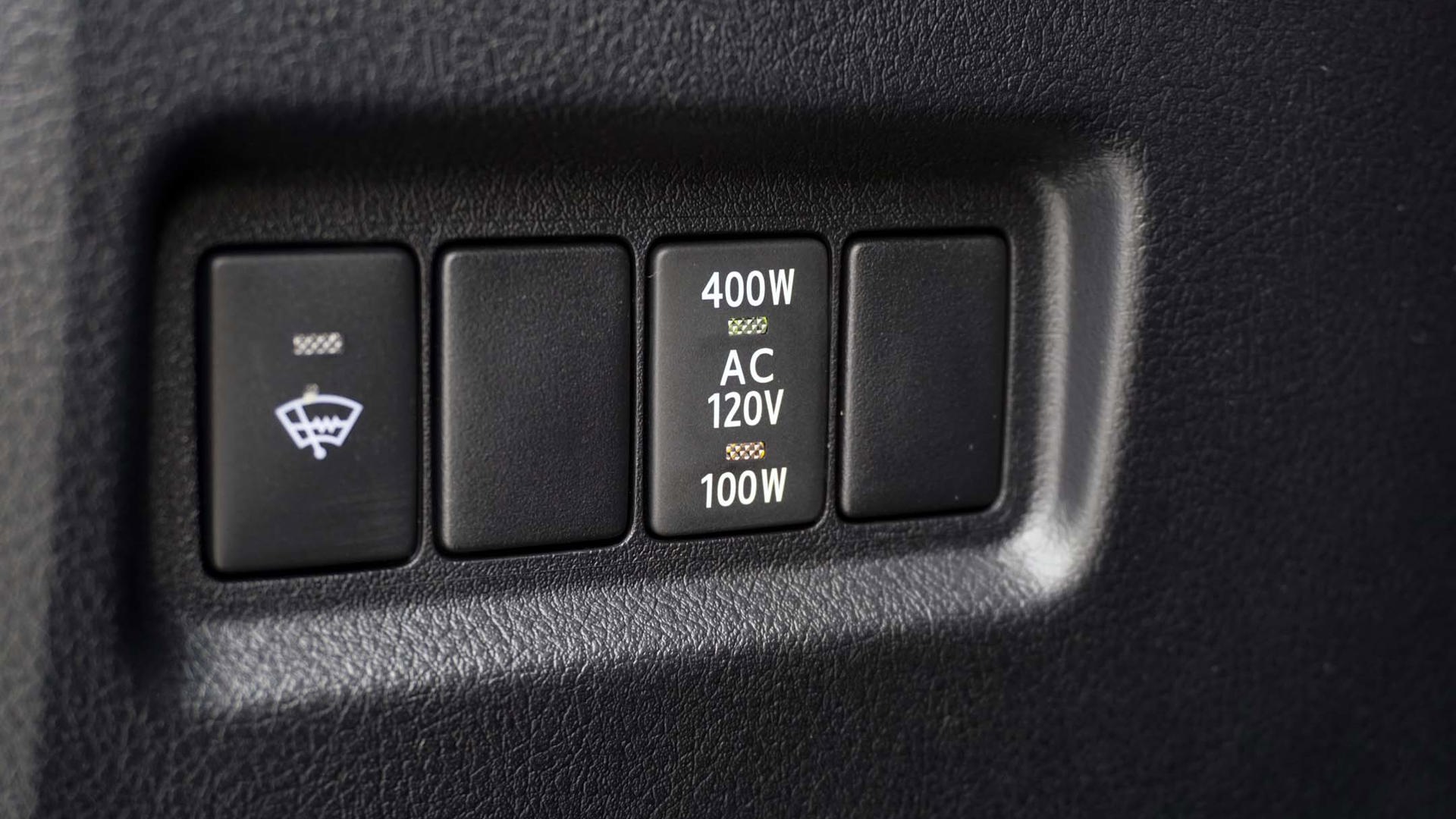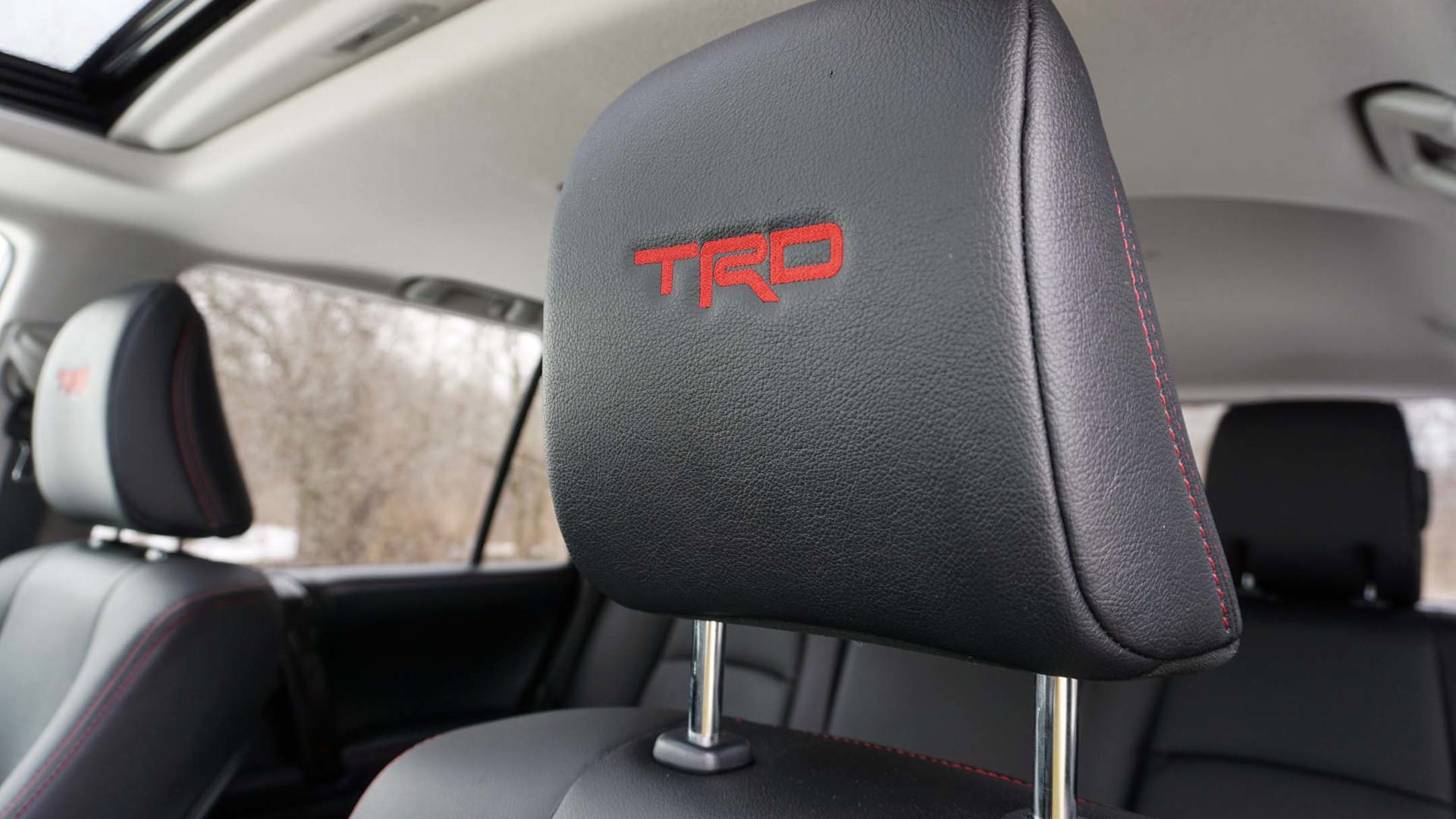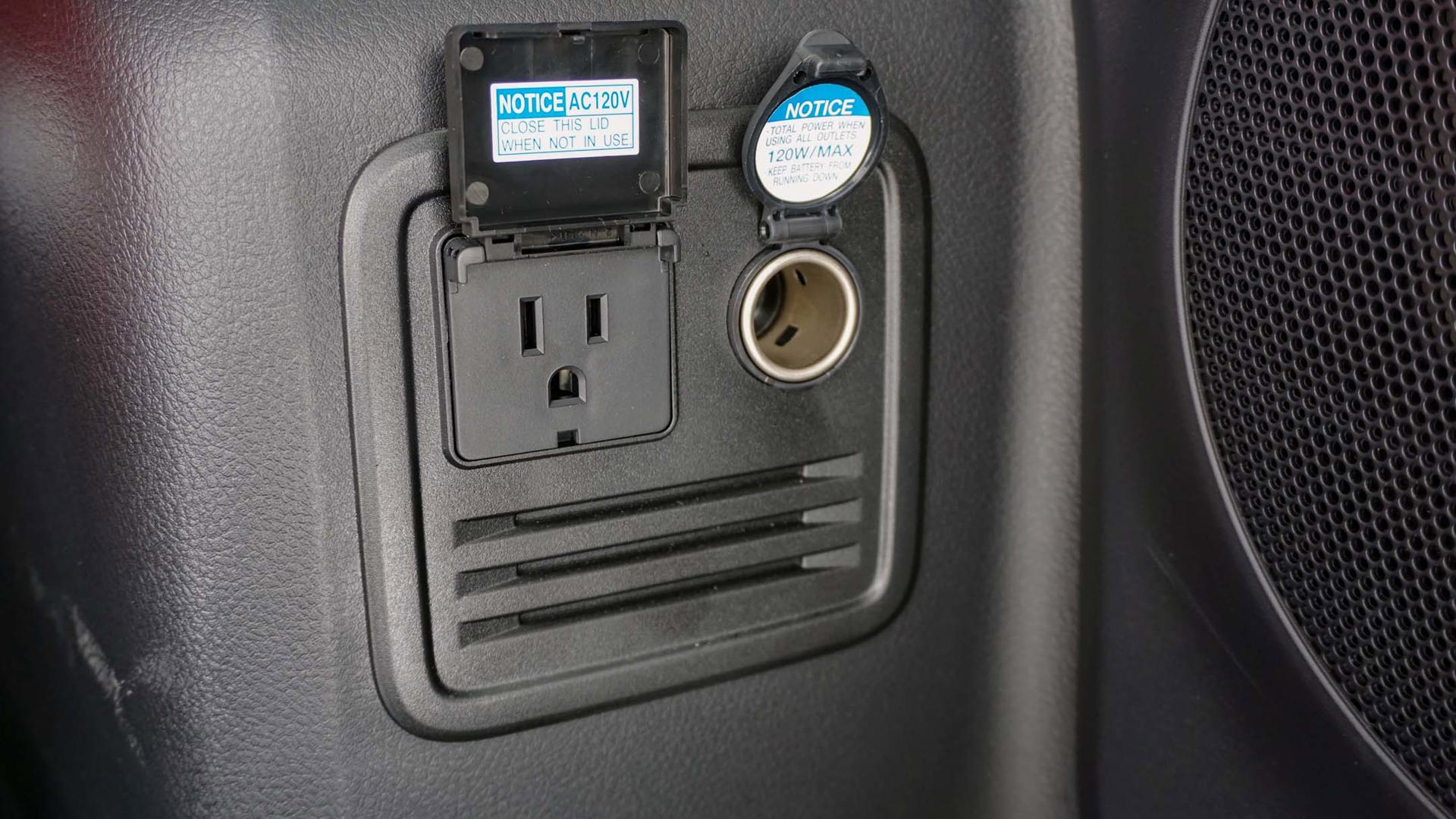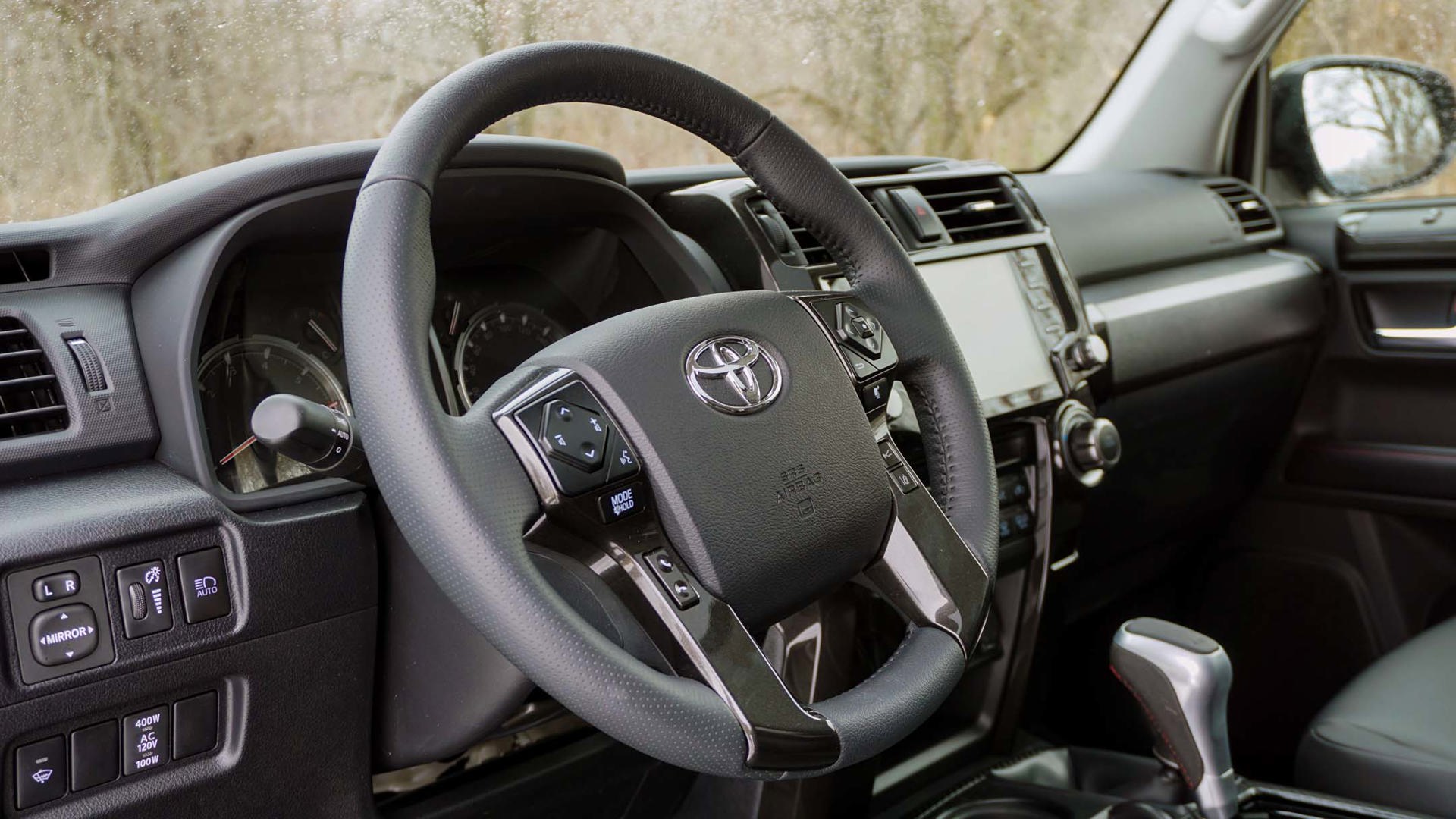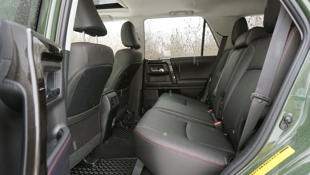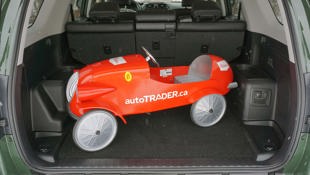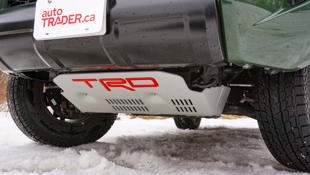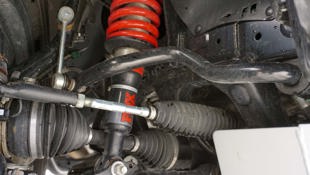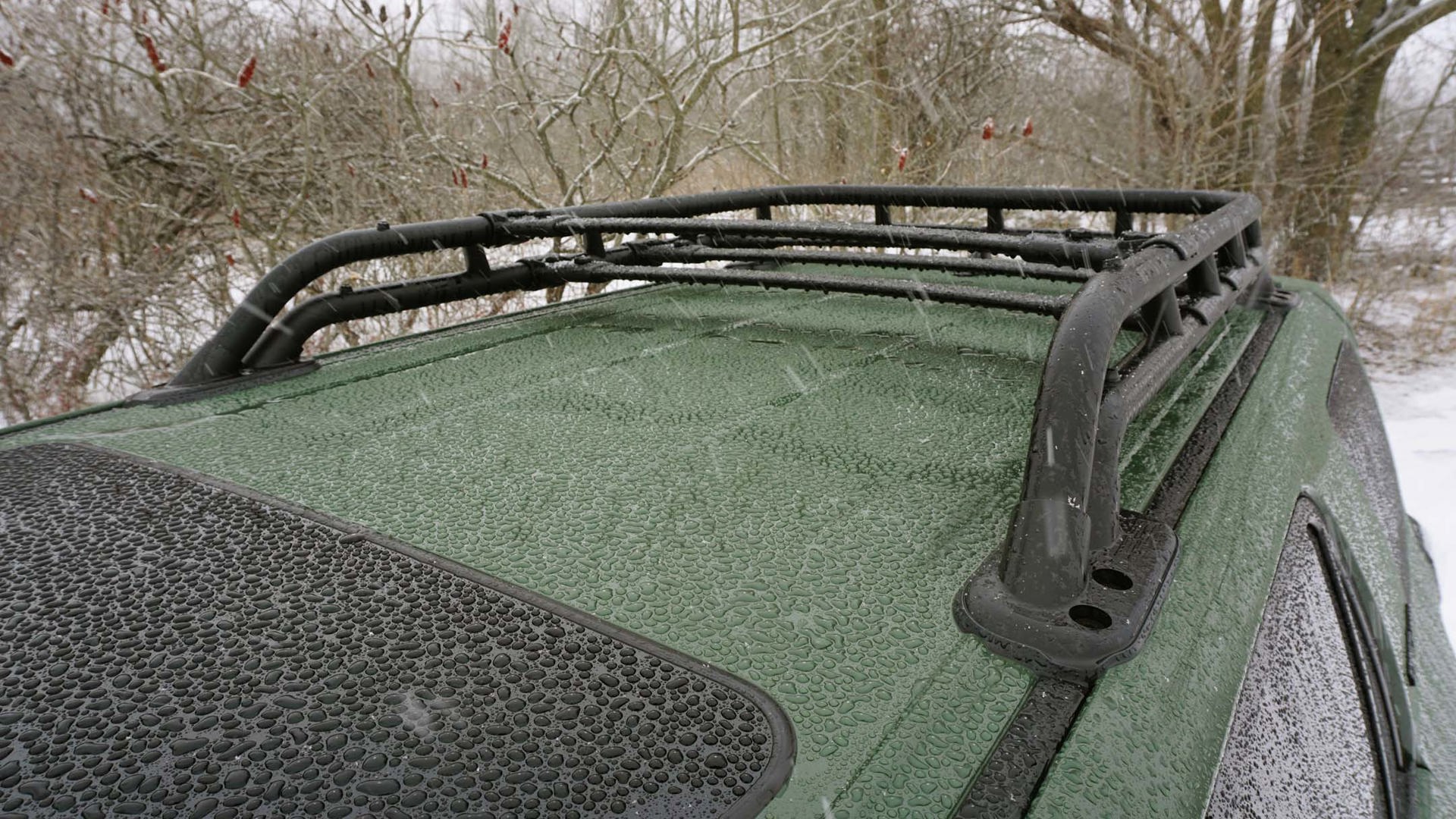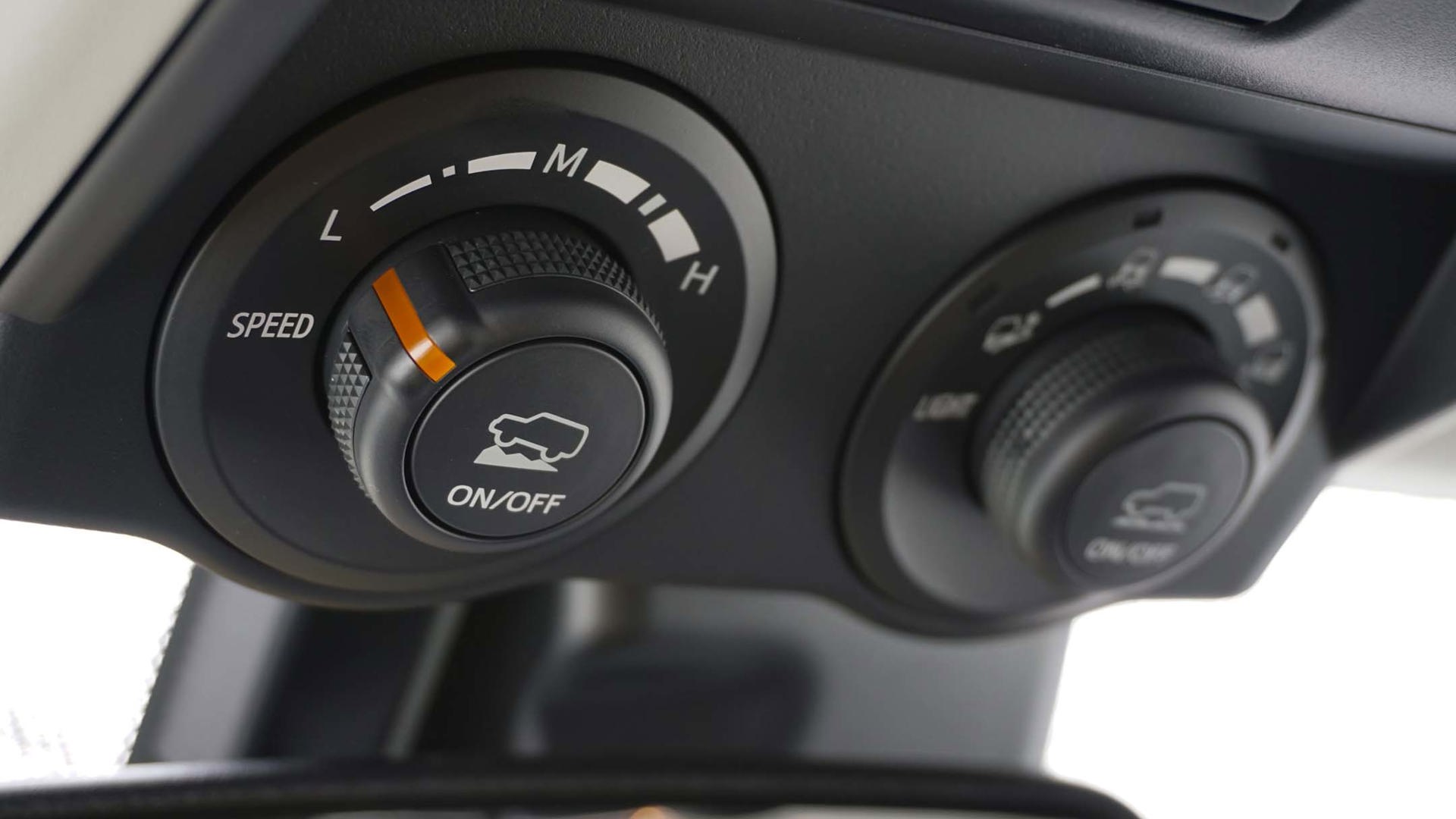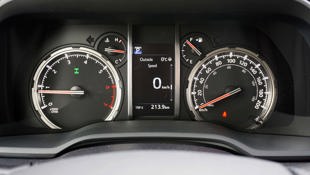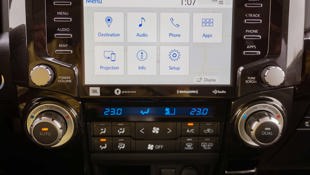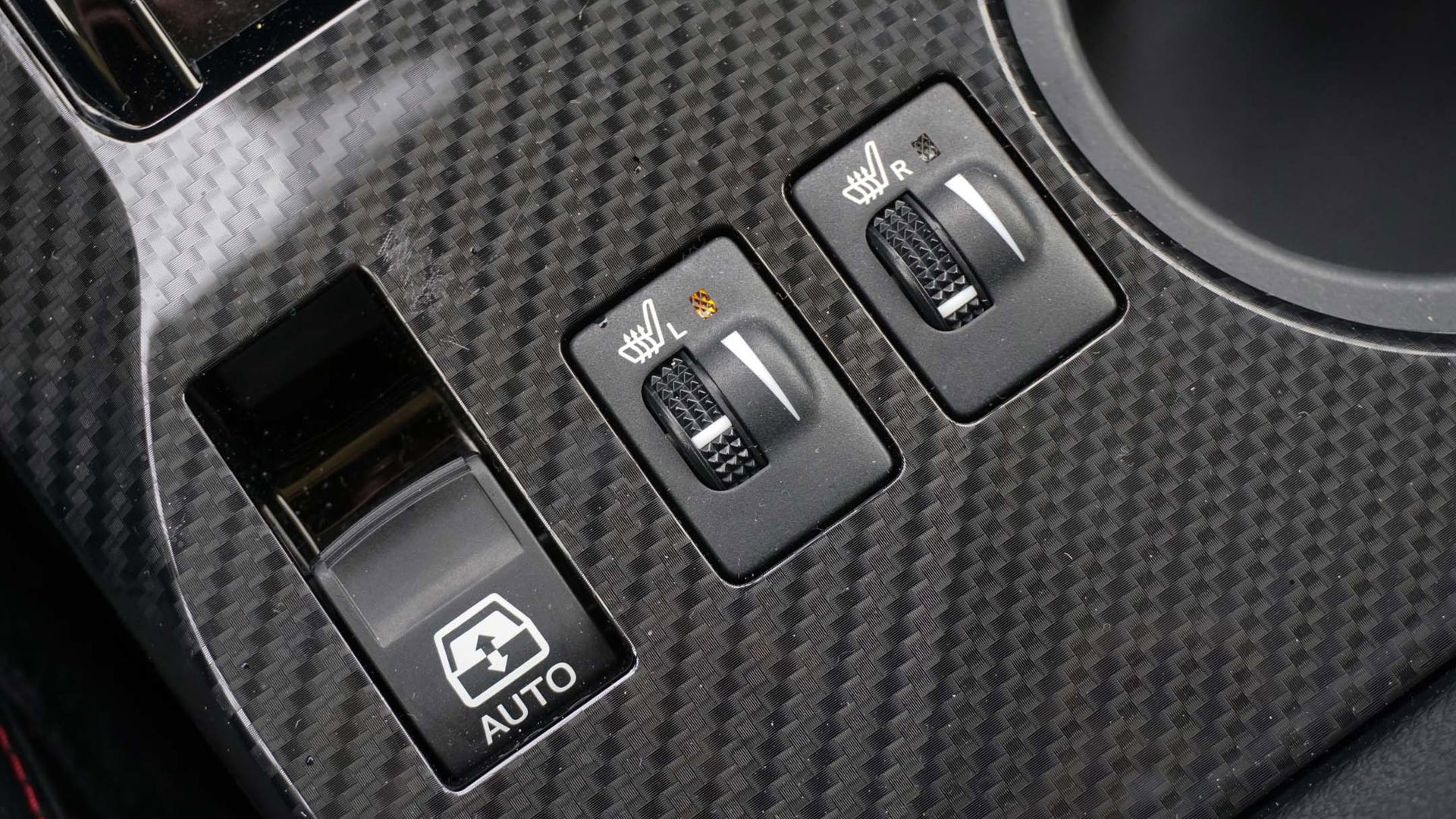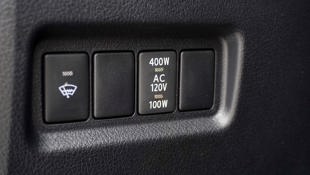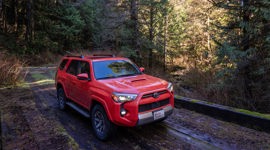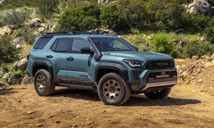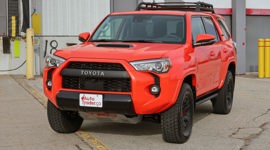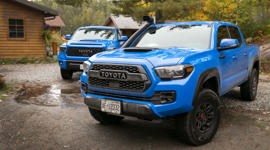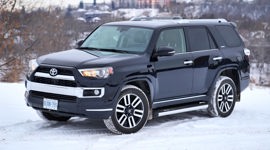 AutoTrader SCORE
AutoTrader SCORE
-
STYLING9/10
-
Safety6/10
-
PRACTICALITY8/10
-
USER-FRIENDLINESS9/10
-
FEATURES8/10
-
POWER8/10
-
COMFORT8/10
-
DRIVING FEEL8/10
-
FUEL ECONOMY6/10
-
VALUE8/10
As far as SUVs go, it doesn’t get much better than the 2020 Toyota 4Runner TRD Pro.
The model year is what matters most here, because this newest version makes the old-school off-roader easier to live with than ever before thanks to a few new convenience features that only enhance the 4Runner experience.
Styling: 9/10
No version of the 4Runner looks anywhere near as badass as the TRD Pro version, full stop. (Well, at least not until you peek inside, but we’ll get to that.) Building on the inherent coolness of Toyota’s most rugged sport utility vehicle, the most expensive model gets all kinds of aesthetic improvements thrown its way.
The front end gets a unique treatment and is complemented by an aluminum skid plate stamped with the TRD logo that’s painted red for good measure, while a massive tubular roof rack adds to the 4Runner’s form and function. Other exterior enhancements include black wheels and badging; nothing over-the-top or excessive. Set against the TRD Pro-exclusive Army Green paint of my tester, this 4Runner looks the business.
The interior aesthetic, on the other hand, is far more subdued. The same abundance of black plastic found in most other 4Runner models is found here, with twin TRD logos embroidered in red on the front seat headrests representing the indicators as to where $62,120 before fees and tax was spent.
Features: 8/10
The fifth-generation 4Runner was introduced about a decade ago and it certainly shows. Thankfully, upgrades for 2020 address some of the signs of aging, starting with a vastly improved infotainment system. While Toyota would still be wise to leverage its roughly 20 percent ownership stake in Subaru for some pointers on how to do infotainment right, the system in the newest 4Runner is a step in the right direction. Best of all, Android Auto and Apple CarPlay functionality are finally built in.
Additional upgrades across the 4Runner lineup for 2020 include dual-zone automatic climate control, push-button start and some extra USB ports in the back, as well as advanced safety features like adaptive cruise control, automatic high-beams, lane-departure warning and forward emergency braking with pedestrian detection.
Beyond the exterior styling upgrades, a bulk of the $14,000 the TRD Pro package tacks onto a base 4Runner’s price tag goes toward off-road equipment. The suspension is bolstered via TRD-tuned springs and Fox shocks, while a locking rear differential will keep the back wheels spinning at the same rate – a handy trick out on the trail. The TRD Pro also adds a mechanical lever to operate the four-wheel-drive system and meaty 31.5-inch tires designed for tackling trails (or at least designed to look that way).
Other off-road goodies are of the electronic variety, with Toyota’s crawl control and terrain selection systems, both of which tailor the 4Runner’s drivetrain to manage all types of trail conditions. Crawl control takes care of throttle and brake modulation so the driver can focus on steering over and around obstacles, while the terrain select system adjusts engine, brake force, and traction control to better manage different surfaces.
There’s also a 15-speaker stereo in the 4Runner TRD Pro, which comes in handy when it’s time to drown out the droning exhaust note that borders on intolerable at highway speeds.
Practicality: 8.5/10
In most ways, the 4Runner TRD Pro is about as practical as it gets. It’s only offered with seating for five – other 4Runner models add a stowable third row for a seven-passenger capacity – but it optimizes most of its dimensions for a roomy ride all around.
The cabin could stand to benefit from some additional cubbies to stash stuff, but there’s plenty of space to stretch out inside. Headroom is somewhat squeezed, especially in the back, but shoulder- and legroom are offered in abundance. There’s also a lot of cargo room behind the back seats, which are 40/20/40-split/folding for outstanding configurability.
Cargo room with the rear seats upright stands at 1,337 L – generous confines that are easily accessed thanks to a liftover height that’s surprisingly low despite the 4Runner’s impressive ground clearance. While the back seats don’t quite fold completely flat, tucking them away yields 2,540 L of cargo room.
The 4Runner’s off-road functionality is also beyond reproach, and it becomes even more so in TRD Pro guise. The same ground clearance (243 mm) and approach and departure angles (33 degrees and 26 degrees, respectively) in the rest of the 4Runner lineup are found here, but all the additional equipment ensure there isn’t much the TRD Pro can’t drive over or through.
Power: 8/10
Old-school off-road enthusiasts will rejoice over the tantalizingly untouched mechanicals motivating this rig. Toyota’s tried-and-true 4.0L V6 remains nestled under the hood and still generates all its output without the help of turbochargers. Numbers don’t jump off the page – 270 hp and 278 lb-ft of torque – but they’re more than enough to move the roughly 2,300-kg 4Runner with ease.
It’s not going anywhere in a hurry, but there’s a certain theatre to the six-cylinder that simply can’t be replicated by modern turbo motors: the way it roars to life on cold starts, or how it heaves the truck forward with every stab of the throttle. It’s the kind of drama that’s becoming harder to find these days, providing an enjoyable dose of nostalgia to driver and passenger alike.
Towing capacity could be better for a body-on-frame SUV, with the 4Runner rated to pull 2,268 kg (5,000 lb). That will, however, handle most smaller travel trailers with relative ease – and there’s a standard hitch with four- and seven-pin wiring hookups.
Driving Feel: 8.5/10
The engine is just the start of the refreshingly classic driving experience the 4Runner delivers. Shifts from the five-speed automatic transmission aren’t exactly snappy but they certainly are smooth, providing lots of revs to work with before switching gears.
The 4Runner is also one of the few vehicles on the market that still employs hydraulic power steering, and it’s all but perfect. Weighted exceptionally well, the system stands provides genuine feel and feedback – a welcome throwback that contrasts modern steer-by-wire applications. While its turning circle is akin to that of a school bus, the 4Runner’s steering is easy to operate at a variety of speeds.
If there was one mechanical letdown it would be the brakes, with deep – and unnerving – presses of the pedal required before the binders start to do their work, increasing the perceived heft of the already heavy SUV. It’s not that they don’t work, but rather that they don’t immediately feel like they’re going to work, leading to moments of panic before the 4Runner’s nose starts to dive on its springy suspension as momentum slows.
Since the TRD Pro is the most hardcore version of the 4Runner, it skips the hydraulic sway bars offered on other models (as well as the Lexus GX 460), but suspension articulation on the trail is more than adequate. With the four-wheel-drive system engaged, the TRD Pro managed to crawl over slick and slippery downed utility poles and through deep crevices without fuss during testing.
Fuel Economy: 6/10
What can one expect from an old-school off-roader at the pumps? Well, plenty of stops at them, for starters. Fuel capacity is plentiful, with an 87-L tank mounted beneath the back seat. Unfortunately, it doesn’t take long to burn through it – especially when taking advantage of the TRD Pro’s aptitude for adventure.
Natural Resources Canada (NRCan) ratings for the 4Runner stand at 14.8 L/100 km in the city, 12.5 L/100 km on the highway, and 13.8 L/100 km combined. A week of testing ended with real-world consumption of 14.6 L/100 km, not terrible considering the winter tires my tester wore and the type of adventure we encountered together, but not ideal either.
User Friendliness: 9/10
As a 10-year-old Toyota, there are few vehicles on the market today that are more approachable than the 2020 4Runner. Climbing inside isn’t particularly easy – the plastic running boards are likely to be victimized on the trail but make the trip up a bit more manageable – but once there, it’s a delight of simplicity.
Outward views are outstanding, the 4Runner’s big windows providing great glimpses at what’s going on around it. While the exceptionally large roof rack makes parking in enclosed areas a challenge – the TRD Pro is the first vehicle I’ve had to park outside during testing for its failure to fit in my parking garage – it’s somewhat surprisingly easy to manoeuvre safely given its size.
A pair of chunky knobs adorn the dash and are used for cabin temperature adjustments, while the rest of the climate controls are operated via clearly labelled buttons between them. And, of course, on top of those is 4Runner’s new eight-inch touchscreen infotainment system with its smartphone functionality.
While not quite as simple to use as others on the market – namely those from Fiat Chrysler, Subaru, and Hyundai – the system is reasonably responsive and simple to grow accustomed to. Buttons flank the screen for quick navigation from one feature to the next, while the voice recognition function made sense of dictated texts and directions.
Comfort: 8.5/10
The 4Runner TRD Pro has few true competitors in the current market – though Ford will soon see to that with the Bronco making its highly anticipated return. For the time being, those looking for a mainstream off-road machine have little more than the Jeep Wrangler Unlimited to spend their money on.
The newest Wrangler is better than it’s ever been, but there are still some deficiencies about it that are hard to ignore – namely, that it’s not especially quiet or comfortable. While that’s to be expected from a narrow-bodied SUV with a removable roof and doors, they are the types of issues that don’t even blip the 4Runner’s radar.
As capable as the TRD Pro is on the trail, it’s equally competent cruising the highway, something few folks can honestly say about the Wrangler. The suspension that’s so well suited to the trail gives the 4Runner a ride that’s impressively refined, resulting in smooth driving around town and on the highway.
No, the roof and doors can’t come off, but the tailgate glass opens like a traditional power window to get the air flowing through the cabin. Prefer to keep the windows sealed and the bugs at bay? The dual-zone automatic climate control will keep you and four of your closest friends comfortable on and off the road.
The seats are reasonably comfortable and supportive, though they’re only heated up front. There’s also no heated steering wheel, which is an odd omission in a vehicle that costs almost as much as a Mercedes-Benz GLE-Class SUV.
Leather upholstery isn’t included (though it is in other 4Runner models), relying on Toyota’s synthetic material for the seating instead. While the material doesn’t match the TRD Pro’s price tag, it does suit its capabilities, feeling durable and easy to clean. Some of the cheap plastics inside, on the other hand, could stand to be replaced in this $60,000-plus SUV.
Safety: 6/10
The Toyota 4Runner is quick to dispel the notion that bigger is better when it comes to safety. Crash-testing conducted by the Insurance Institute for Highway Safety (IIHS) back in 2014 is still relevant today – don’t forget, the 4Runner is mostly unchanged over the last decade – and revealed poor structural integrity following a collision. Part of this can be blamed on its age: plenty of advancements in vehicle construction have been made over the last 10 years, and the 4Runner hasn’t benefited from any of them.
Value: 8/10
There’s no way to sugar-coat the selling price of the 4Runner TRD Pro. While the entry-level SR5 on which it’s based has a sticker price of $48,120 before freight and fees, the top of the 4Runner heap takes a $14,000 jump from there. All told, the selling price for a shiny new TRD Pro sits at $64,035 with freight and fees – a big chunk of change for a decade-old SUV that’s short on options like ventilated front seats, a heated steering wheel, and heated rear seats.
However, when you consider that it packs the personalities of two vehicles in one – a comfortable highway cruiser and an off-road extraordinaire – there’s at least a glimmer of value hidden in the accounting. And given the sky-high prices of new vehicles these days, it’s not a totally unreasonable sum of money either.
The Verdict
Shoppers considering spending $60,000 or so on a loaded Jeep Wrangler Unlimited Rubicon would be wise to give the 2020 Toyota 4Runner TRD Pro a serious look. Jeep people are some of the most devout auto enthusiasts out there, and it’s unlikely the diehards are going to switch allegiances anytime soon.
The people this 4Runner is going to appeal to are the ones who think the Wrangler looks badass – which it does – but don’t really know what they’re getting themselves into when it comes to ride comfort and drivability. For those reasons and more, the 4Runner TRD Pro is worth putting on your shopping list.
| Engine Displacement | 4.0L |
|---|---|
| Engine Cylinders | V6 |
| Peak Horsepower | 270 hp @ 5,600 rpm |
| Peak Torque | 278 lb-ft @ 4,400 rpm |
| Fuel Economy | 14.8/12.5/13.8 L/100 km cty/hwy/cmb |
| Cargo Space | 1,337 / 2,540 L seats down |
| Model Tested | 2020 Toyota 4Runner TRD Pro |
| Base Price | $62,120 |
| A/C Tax | $100 |
| Destination Fee | $1,815 |
| Price as Tested | $64,035 |
|
Optional Equipment
None
|
|
